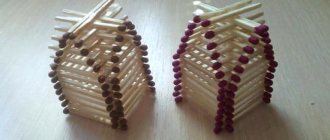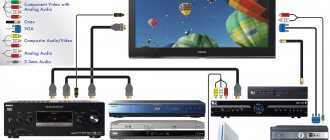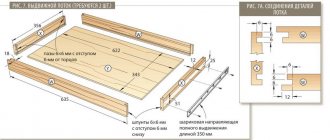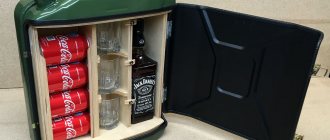To avoid mistakes when choosing a home planetarium, you must immediately decide for what purpose the device is being purchased. This must be done so as not to later regret the money wasted on a multifunctional device that is used exclusively for decorating a room from time to time.
Inexpensive compact options are quite suitable as a night light with a pleasant addition in the form of a detailed map of the night sky. For a child who is interested in studying astronomy, it is better to purchase an option with more accurate projection characteristics and correction for the time of day and date. For the youngest astronomers, simple budget modifications with a minimum of bells and whistles are suitable, which, as the child grows up, can be replaced with more advanced models for an in-depth study of celestial bodies.
Today’s rating will help you navigate the variety of models and answer questions: how to choose a planetarium, what the device looks like, and what to look for when buying.
How to make a mini planetarium from a sleeve and a flashlight?
- Author Nikolay
- March 11, 2016, 16:00
It’s very simple to make an exciting toy for a 3-7 year old child that will not only entertain him, but also teach him to recognize constellations. To do this, you won’t need anything that you don’t already have at home, and the resulting portable “mini-planetarium” will be much more useful and enjoyable than, say, a new branded doll from a popular animated series. In addition, this toy is so easy to make that you can easily make it together with your child - he will probably be only too happy to help.
So, to create your own “mini-planetarium” you will need:
- paper,
- sleeves from toilet paper rolls (one for each constellation),
- scissors,
- scotch,
- flashlight (important! LED flashlights with many diodes are not suitable - the picture of your “constellations” will be duplicated. You need a flashlight with one bulb or diode).
To begin, cut a circle of paper to fit the hole in the sleeve.
On the resulting circle, draw a pattern of dots corresponding to some well-recognized constellation.
Then cut out another circle, larger in size than the first.
Fold them so that the smaller circle is inside the larger one, and pierce both in the places where you want the stars.
Then place both circles on the sleeve, with the larger circle facing out. Use scissors to make notches along the edges so you can easily bend it around the sleeve.
Secure the paper to the sleeve with tape.
Make as many constellation bushings in this manner as you see fit.
Turn off the light (or, if it's during the day, just go to the bathroom with your child), point the flashlight inside the sleeve and - voila! – the desired constellation will clearly appear on the wall or ceiling. You can be congratulated - you yourself have assembled your own planetarium. Good luck!
Source
Planets of the solar system
You will need: 8 balloons, newspapers, cardboard, paper, water, starch, acrylic paints, brushes, primer, varnish, scissors, sponge, needle.
Master Class
- Inflate balloons on a planetary scale.
- Make a paste in this way: mix 3 tablespoons of starch with half a glass of cold water. Add 2 cups of boiling water, stir thoroughly and wait until it cools.
- Prepare strips of newspaper, then dip them in paste and cover each ball in 3 layers using the papier-mâché principle, do not forget that each layer must dry before applying the next.
- When all 3 layers of paper are dry, pierce the balls with a needle, carefully pull them out, and cover the holes with strips of paper.
- Cover the planets with primer and wait until completely dry.
- Paint the planets in several layers using a sponge and wait until completely dry.
- Cover the planets with varnish.
- Make a circle out of cardboard and glue it onto Saturn.
Planets of the solar system using papier-mâché technique are ready!
Making a home planetarium with your own hands
You can make the simplest home planetarium yourself, but only if you have all the necessary components of the future device at hand.
So, let's make a home planetarium with our own hands! You will need:
- Shoe box.
- Paper.
- Small flashlight.
- Pencil.
- Toothpick.
- Constellation map (you can take a ready-made one or print it from the Internet).
How to make a home planetarium:
- We take a map of the constellations and carefully redraw it on a blank sheet of paper. If we printed it, you can skip this step.
- Take a toothpick and carefully pierce all the stars. This will take about 20–30 minutes.
- Place the included flashlight inside the box.
- We cover the box with the punched card obtained after completing step 2.
- Turn off the lights and enjoy the beauty of space!
Unfortunately, this version of the starry sky will be highly inaccurate and not particularly colorful. If you want billions of stars to shine above your head at home and even comets to fly by, we recommend purchasing a home planetarium from optical equipment manufacturers.
Use of the material in its entirety for publicly accessible publication on media and any formats is prohibited. It is allowed to mention the article with an active link to the website www.4glaza.ru.
The manufacturer reserves the right to make any changes to the price, model range and technical specifications or to discontinue production of the product without prior notice.
Other articles about binoculars, monoculars and spotting scopes:
What is a home planetarium?
This device appeared relatively recently, but has already gained great popularity. Many who have heard about it are interested in what a home planetarium looks like and what it is. A starry sky projector is a compact device that, thanks to its projection onto a wall or ceiling, helps you admire the starry sky without leaving your home. The image is an identical copy of real constellations, which change over time.
On sale you can find a starry sky projector (home planetarium), produced in simple or more functional devices, suitable even for universities as an astronomy aid. There are models that reproduce different effects, for example, falling stars or the Northern Lights. A starry sky projector can be an original gift, even for those who know nothing about stars and planets.
How does a home planetarium work?
In order to accurately understand whether you need a starry sky projector or not, it is important to find out how to operate it and whether this will cause any problems. To get a beautiful image you need to do the following:
- Before turning on, the home planetarium for children and other models are placed on a stable horizontal surface.
- The selected image is placed in a special slot.
- After connecting to the network, the device will begin to project the selected image through the lenses.
- There is a button or lever on the panel, thanks to which the starry sky projector night light can rotate.
- Among other things, you can fix a certain angle of inclination.
- A special roller helps to focus the image clearly.
Home planetarium - characteristics
When choosing a particular device model, you need to know what points you need to pay attention to so that you will be happy with your purchase for a long time. A home children's planetarium includes the following technical characteristics:
- number of stars in projection;
- optimal distance;
- tilt angle;
- rotation and shooting star function;
- timer;
- power supply;
- dimensions of the starry sky projector;
- accuracy.
Why do you need a home planetarium?
Many people consider this device to be an ordinary toy for children. However, the owners claim that the starry sky projector helps to relax and unwind after a hard day, especially if you add relaxing music. Such a device will give the party originality, and the special effects will be remembered by everyone without exception. The children's planetarium will help kids spend many exciting hours exploring the night sky. Students and high school students can use the starry sky projector as a tool for studying astronomy.
Creating the Moon using papier-mâché technology
An original French technique for creating magnificent copies of objects, which quickly found its place in the system of Russian handicrafts and education.
Step-by-step instructions for operation:
How to choose a home planetarium?
A projector is an original gift with which you can watch the stars while at home. When choosing a “Starry Sky” laser projector or other planetarium models, you need to take into account the following criteria:
- Purpose
. Children's devices are small in size and have minimal features that help demonstrate the scale of the universe. For advanced users, a starry sky projector with additional settings is suitable. - Ceiling height
. On average, the figure should be 2 m. For a clear image, high white ceilings are ideal. - Number of celestial objects
. A home starry sky projector has an indicator from 5 to 50 thousand stars. - Changing the angle
. With this feature, you can change the location depending on the date, time, and geographic location. - Rotation frequency
. A starry sky projector with a slow speed is suitable for relaxation, but you can choose another option. - Number of disks
. The stars can be complemented by projections of the Moon, Northern Lights, Milky Way and the like. - Remote controller
. This device will help you change pictures without leaving your resting place. If the child falls asleep, so as not to disturb him, you can turn off the starry sky projector using the remote control. - Price
. The higher this indicator, the more functions the device has, so it is important to determine whether all the add-ons will be used so as not to overpay. - Owner reviews
. Before buying a starry sky projector, it is useful to find out the opinions of other people who have already used it, because the seller’s words cannot always be trusted.
Home planetarium – rating
Among the wide variety, some models stand out that are in greatest demand on the market. We invite you to take a look at the rating:
- Segatoys Homestar Classic
- a home planetarium that projects the largest number of stars. - Pro UNCLE Milton
– a star theater with a futuristic design. - Eastcolight
– the best home planetarium with a built-in radio. - Sititek AstroEye
– the starry sky projector is endowed with high detail with an optimal price-quality ratio. - Bondibon
– this equipment has the best price.
How to make a home planetarium?
Many people want to change the decor or add zest to the interior. Making a simple model of a planetarium at home consists of the following steps:
- Take a jar with a wide mouth.
- A sheet of thick aluminum foil is wrapped around it and the excess is cut off.
- A star map is printed on a sheet of paper. Its width should correspond to the height of the jar.
- Glue the card and foil together with tape.
- The main points of the stars are pierced using needles of different sizes.
- Separate the card from the foil.
- The aluminum sheet is placed in a jar, the starry sky projector is almost ready.
- Any LED device can be installed on the bottom.
- Turn on the product in the dark and enjoy the created beauty.
Source
Budget
You can purchase a home planetarium both in a network and in an online store, and the latter will have more choice. Popular models of simple planetariums for home can be purchased at prices ranging from 700 to 2,500 rubles; they are usually sold disassembled. Following the instructions, the model is easy to assemble yourself. The rating of high-quality “semi-finished” planetariums, as usual, is opened by inexpensive products.
Starry Sky Planetarium
Prefabricated model made in China. Product material: paper, glass and plastic. There is a certificate for serial production. One of the simplest modifications: even a child can figure out how the device works. The set includes:
- Blanks for domes of the southern and northern hemispheres,
- Lamp with switch,
- Supports for the dome (4 pcs.),
- Adhesive tape,
- Detailed description-instructions.
The photo shows that the blanks have the shape of hemispheres, as well as special fastenings along the edges and are easily connected around the stand, additionally secured with supports. This creates a star dome with illuminated constellations. Product warranty – 1 year. Powered by 3 batteries included. Where to buy: this version of the planetarium is almost impossible to find in online stores, so online trading platforms can help the buyer.
Advantages:
- Average price – from 700 rubles;
- Easy and quick to assemble.
How to set up a planetarium at home
I don’t know about anyone, but I really love looking at the starry sky.
Why? Don't know. But I recently noticed that my children quietly sit down on a bench in the garden near me and also silently look at the sky. I don’t know about anyone, but I really love looking at the starry sky. Why? Don't know. But I recently noticed that my children quietly sit down on a bench in the garden near me and also silently look at the sky. I quietly asked them: why are they silent and looking at the sky? The daughter dreamily said that she was waiting for a shooting star to make her deepest wish. The son's answer was more pragmatic. He's just a fan of the Star Wars series and dreams of becoming a Jedi. What struck me most was my own husband. He said that the starry sky is not just romance, but a whole universe that unites not so much the whole world as family members. And I didn’t even think about it. Just enjoying the quiet evenings with my family and the stars in the night sky. But the worst thing is that the starry sky in our region can only be admired for a few days or weeks a year. And I really want to be able to afford it at the slightest desire. And how to do it?
"Sky" at the head
Or you can make not just a night light, but a whole painting-installation on the wall. Stuff a thick dark cloth, cardboard or PVC film onto a wooden frame (metal frame). Underneath it, install a network of non-heating LEDs, attach bundles of fiber-optic “threads” to each of them and thread them into the fabric. If desired, you can even arrange them according to the star map.
Assembling the night light
Old lamp
Optical fibers can be taken from previously popular lamps, like the one below.
In the locations of the “galaxies”, attach bundles of thicker fibers, and complete the rest of the sky with separate “threads”.
"Sky" at the head
The work is very painstaking, but the resulting masterpiece is worth it.











